Is It illegal To Put A Lock On Your Refrigerator?
In a world where privacy and personal space are highly valued, the concept of locking a refrigerator might seem peculiar, yet it sparks curiosity and practical considerations. Is it legal to lock your refrigerator? This is a subject that comes up whether you’re trying to keep an eye on communal living spaces, secure specific dietary goods, or just keep things under control.
Absolutely! It’s generally legal to put a lock on your refrigerator. This action is typically considered a personal choice for safeguarding food or managing access in shared living spaces. Conditions may shift though, so it’s advantageous to take into account any particular conditions or applicable local laws.
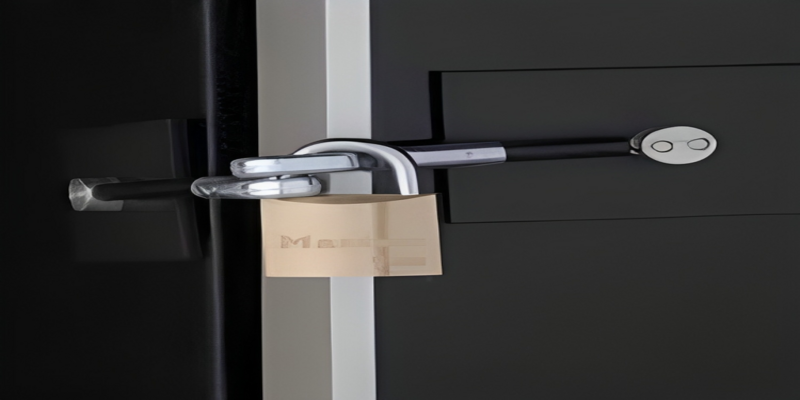
Is it illegal to put a lock on your refrigerator? Fully Guide
Step 1: Understanding the Legal Context
- Goal: Clarify if there are any legal restrictions on adding a lock to your refrigerator.
- Take Response: Research local laws and tenant agreements, if applicable, to ensure no regulations forbid adding locks to appliances.
Step 2: Assessing the Need for a Lock
- Goal: Determine why you need a lock on your refrigerator.
- Take Response: Identify reasons such as dietary restrictions, preventing food theft, or child safety.
Step 3: Choosing the Right Type of Lock
- Goal: Select an appropriate lock that meets your needs without damaging the refrigerator.
- Take Response: Explore options like padlocks, child-proof locks, or custom fridge locks.
Step 4: Installation Process
- Goal: Install the lock safely and securely.
- Take Response: Follow the lock’s installation guide, ensuring it doesn’t interfere with the fridge’s functionality or cause damage.
Step 5: Addressing Safety Concerns
- Goal: Ensure the lock doesn’t pose a safety risk, especially in emergencies.
- Take Response: Consider an easily accessible unlocking mechanism in case of emergencies.
Step 6: Managing Shared Spaces
- Goal: Navigate the dynamics of shared living spaces when installing a fridge lock.
- Take Response: Communicate with housemates or family members, explaining the need for the lock and establishing guidelines for its use.
Step 7: Reviewing Local Laws and Regulations
- Goal: Ensure compliance with any specific local regulations regarding appliance modifications.
- Take Response: Consult a legal expert or local authorities if unsure about the legality in your area.
In summary:
- Review: Installing a lock on your refrigerator is generally legal, provided it doesn’t violate any local laws or rental agreements.
- Final Thoughts: Always balance personal needs with safety considerations and respect for shared living spaces.
By following these steps, you can make an informed decision about whether to put a lock on your refrigerator, ensuring legal compliance and practicality

Why Would You Lock a Fridge? – Reasons and Contexts
| Reasons for Locking a Fridge | Context and Explanation |
| Child Safety | To prevent children from accessing potentially dangerous items (e.g., alcohol, medications) or choking hazards (small items). |
| Dietary Management | For those with strict diets, food allergies, or medical conditions requiring specific foods, a lock helps maintain control over their diet. |
| Preventing Food Theft | In shared living spaces like dorms or shared apartments, a lock can prevent roommates or others from taking food without permission. |
| Securing Alcoholic Beverages | To restrict access to alcohol, especially in homes with minors or individuals struggling with alcohol abuse. |
| Managing Food Budgets | In communal living situations, a lock can help manage and divide food costs fairly by preventing unauthorized consumption. |
| Mental Health Conditions | For individuals with conditions like Prader-Willi syndrome or eating disorders, a lock can be a necessary measure to prevent overeating or uncontrolled access to food. |
| Pest Control | In areas prone to pests, a lock can add an extra layer of protection against animals like rodents or insects getting into the fridge. |
| Medication Storage | Some medications need refrigeration and must be kept secure, especially if they are dangerous or potentially addictive. |
| Specialty Food Items | Protecting expensive or rare food items that might be targeted for theft or misuse. |
| Experimentation or Research | For scientific or culinary experimentation that requires specific environmental controls or security to ensure the integrity of the experiment or to meet regulatory requirements. |
How to Lock a Fridge Without a Traditional Lock – A Step-by-Step Guide
Locking a refrigerator without a traditional lock can be a clever solution in situations where you need a temporary or non-invasive method to secure your fridge. This guide provides practical, DIY solutions that are easy to implement.
1. Assessing the Need and Suitability
- Objective: Determine the need for a non-traditional lock and ensure your fridge type is suitable.
- Action: Consider why a traditional lock isn’t suitable, such as rental agreements, avoiding damage to the fridge, or needing a temporary solution.
2. Gathering Materials
- Objective: Collect necessary materials for your chosen method.
- Action: Depending on the method, gather child safety straps, Velcro, magnetic locks, or a sliding bolt latch, and tools like scissors or a screwdriver.
3. DIY Locking Methods
- Child Safety Straps: Ideal for temporary and damage-free solutions
- Velcro Straps: Useful for light securing needs.
- Magnetic Cabinet Locks: A more secure yet still non-invasive option
- Sliding Bolt Latch Method: For a more permanent solution without a traditional lock
4. Installation Steps for Each Method
- Child safety straps:
- Wrap the strap around both the fridge and freezer handles, if applicable.
- Adjust the strap length for a snug fit.
- Secure the strap lock.
- Velcro Straps:
- Cut Velcro to the required lengths.
- Wrap around the fridge handles or body, ensuring a tight fit.
- Press firmly to secure the Velcro.
- Magnetic Cabinet Locks:
- Place the lock on the top corner of the fridge door.
- Align the magnetic key on the opposite side of the door.
- Test the lock mechanism.
- Sliding Bolt Latch:
- Align the latch on the fridge body and the bolt on the door.
- Screw in both components securely.
- Slide the bolt into the latch to lock.
5. Safety and Accessibility Considerations
- Objective: Ensure the locking method is safe and accessible.
- Action: Regularly check the integrity of the lock, ensure it can be opened quickly in an emergency, and consider the needs of all household members.
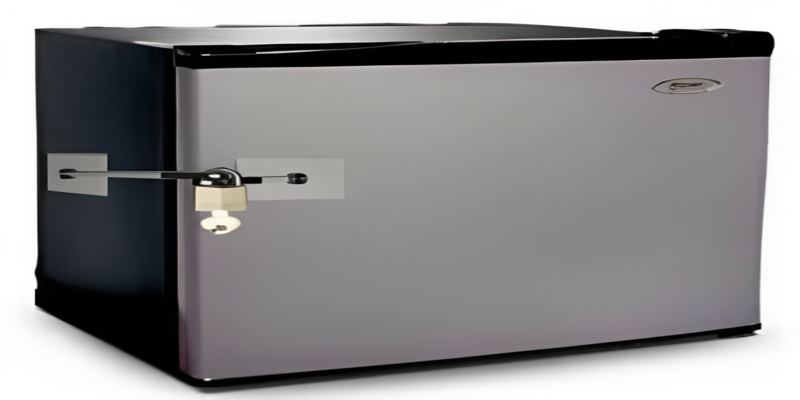
FAQs: Locking Your Refrigerator ?
1. Can I lock my fridge in a rental property?
It depends on the terms of your rental agreement. Some landlords may have restrictions on modifying appliances, so it’s important to review your lease or speak directly with your landlord before installing a lock on your refrigerator.
2. Are there any safety concerns with locking a refrigerator?
Safety concerns can arise, especially in emergencies where quick access to the refrigerator is needed. If you have children, the elderly, or individuals with specific health needs in the house, consider a lock that can be easily and quickly opened.
3. What are valid reasons for locking a refrigerator?
Valid reasons include child safety, securing special diets or medications, preventing food theft in shared living situations, and managing dietary restrictions. Each situation is unique, so the justification for a fridge lock can vary greatly depending on individual circumstances.
Conclusion
In summary, placing a lock on your refrigerator is typically legal, falling under personal property rights and household management.However, some conditions, like rental agreements or guidelines for shared housing, may have an impact on the legality. It’s wise to keep these things in mind and talk to other parties, making sure that your actions respect the rights and safety of everyone living in your home, in addition to any applicable laws or contracts.



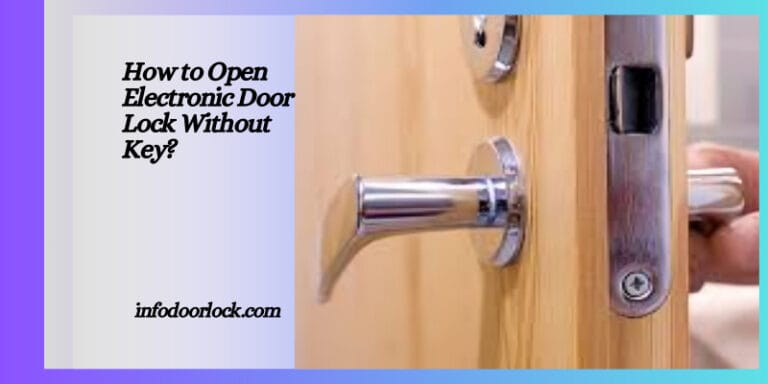
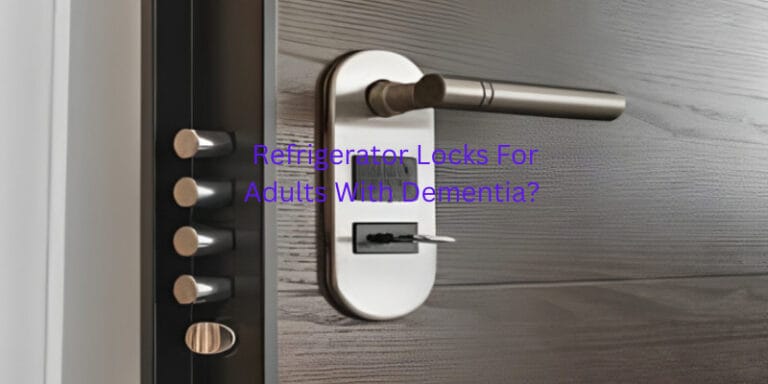
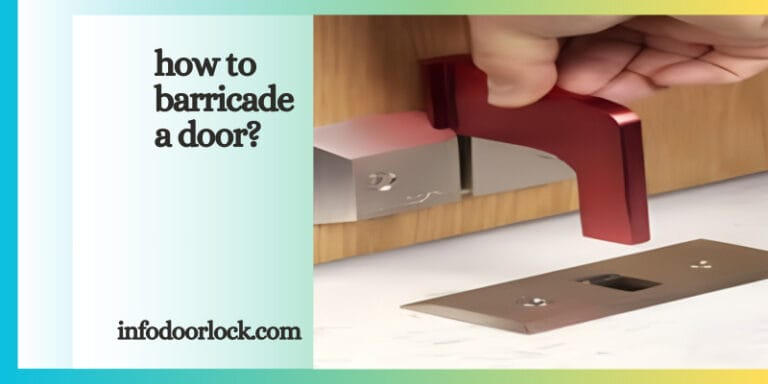
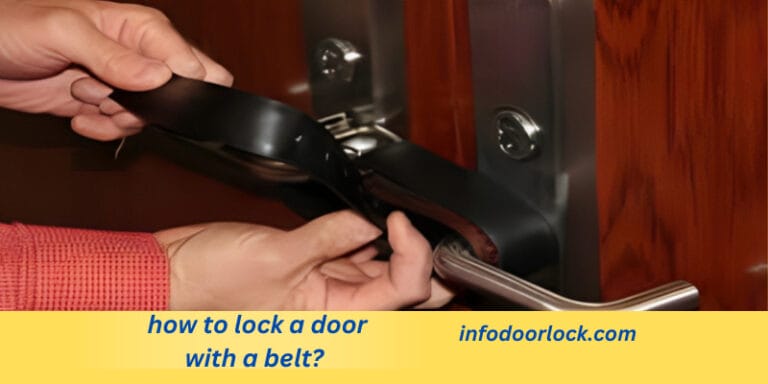

One Comment